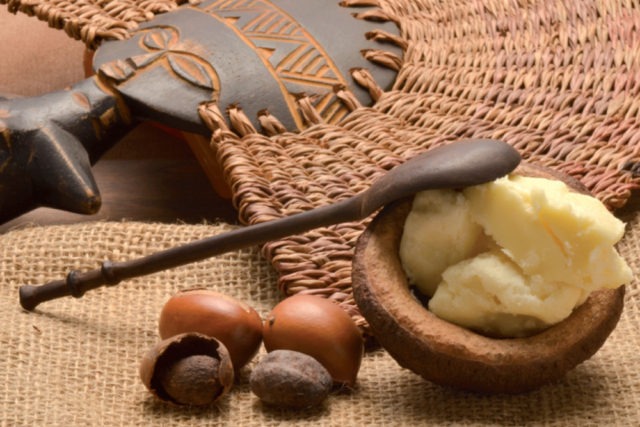With the winter months upon us, dry skin is a common problem. But overcoming flaky, chapped, and dehydrated complexions isn’t accomplished by piling on one moisturizer after another. Here are some ways to keep your skin hydrated by treating the outside and the inside.
How to Hydrate Skin from the Outside
Topical hydration provides the most immediate fix, and the right combination of water- and oil-based products is crucial because layering moisturizers is the best way to increase water in the skin. Apply a serum to hydrate the skin, followed by a rich cream or facial oil to seal in the water.
For very dehydrated skin, a great way to increase water content is by using a nourishing face mask. An easy mask recipe that can be made with simple kitchen ingredients is a nourishing egg white and chamomile skin pack. Egg whites have a restoring and firming property, while chamomile tea soothes and hydrates your skin. This mask is excellent for smoothing out rough dehydration patches and bolstering your complexion’s water content. Make this mask by separating the white of one egg into a bowl and adding water squeezed from one seeped chamomile tea bag (approximately half a teaspoon of tea). Apply this with a baking brush to clean skin and let this replenishing treatment sit until it’s dry. You will know this is done when you see the clear egg mixture turn white. Rinse with tepid water and follow this up with your moisturizing serum and protective oil.
Supplementing the skin with water and oil is not the only way to boost moisture. Sluggish circulation also contributes to dehydration because the blood transports nutrients to and wastes away from skin tissues. When this movement is disrupted, the health and vibrancy of the skin tissue is compromised. Good circulation also promotes collagen production, which helps the skin retain water and keeps it looking youthful and smooth. This is why the skin on the extremities dries out so easily—these limbs are furthest from the heart. Blood flow reaches them last, resulting in dry hands, cracked heels, and a flaky scalp (all of which are common during the dry winter months).
Choosing a stimulating serum or performing a short facial massage while applying skin care products helps improve circulation and also supports skin health and hydration. Serums containing algae, ginseng and Vitamin C encourage blood flow, but may be too stimulating for sensitive skin. If your skin is sensitive, start by incorporating gentle pressing movements into your application of facial products. As your skin becomes less dehydrated, it is also likely to become much less sensitive.
Avoiding harsh chemicals in skin care products is another moisture-increasing beauty practice. The use of depleting chemicals makes it nearly impossible for the skin to maintain moisture, so natural products without petroleum and sodium laurel sulfate must be part of any replenishing program. Alongside all these solutions you may want to think about buying one of the Coolest Gadgets, such as an air conditioner, to your room to ensure your skin stays cool at all times. If you have taken all these measures and your skin remains dehydrated, it is time to examine internal factors.
Increasing Hydration from the Inside Out
The most obvious way to hydrate is by drinking water, and when you do you need to make sure it is clean, take a look at Water Filter Way’s website to learn how. Yet some people drink plenty of water and are still dehydrated. As one of my clients joked, “I could drown in all the water I drink in a day, yet my skin still has no moisture!” Ayurveda attributes this condition to excess Vata (the dosha embodying air that is mobile, dry, rough and light and that rules the nervous system). Whether it is Vata energy weakening the kidneys or increasing the rate of water evaporation, this air dosha can prevent internal water retention. Eating hydrating food, such as soups, stews, and vegetables with cellular fiber and high water content are all beneficial. They calm Vata and force water to move more slowly through the digestive system. It is also necessary to avoid dehydrating liquids, such as coffee and alcohol, and dehydrating foods, such as starches and dense meats. Taking in oils and fats is another way to help hydrate. Oils hold water and lubricate the intestines, making it easier to eliminate. Clean bowels are important for hydration, because dry stools absorb water.
Managing stress is another way to address dehydration. Stress is extremely dehydrating because it taxes the kidneys. The adrenal glands that secrete epinephrine (adrenaline) are located on top of the kidneys, so when you are stressed out, you over-stimulate both the adrenal glands and the kidneys. Although relaxing spa treatments can be helpful, real lifestyle and mind-set changes are the long-term solution for this cause of dehydration.
Finally, as mentioned earlier, poor blood flow deprives the cells of nourishment and causes internal dehydration. This can be improved and increased through exercise and fast paced massage, as well as by eating stimulating foods. Dark chocolate and warming spices are excellent foods for revving up circulation.
Lips: What Pretty Pouts Tell Us about Our Hydration Levels
Since the lips contain more delicate tissue than the rest of the face, they are often the first to show an allergic reaction. Because they relate to the digestive system, swelling, itchiness, and irritation can indicate an internal problem. Swollen lips are a sign of extreme dehydration in the intestines and/or stomach and indicate the body’s attempt to retain water.
While most people see dry or flaky lips as a normal result of the winter season, they indicate a need for internal and external hydration. You can hydrate the gastrointestinal tract by eating a water-rich, easy-to-digest diet. For further diagnosis and recommendations, you may benefit from consulting a health practitioner
Topical protection for dry lips is essential. Using mass market lip balms with petrolatum is often counterproductive because they congest the lips’ pores instead of penetrating the tissue. This is why many people become addicted to Chap stick; we love the sensation of moisture, but when that wears off, we are left with extreme dryness that needs another application. Balms made of vegetable butters, waxes, and oils are much more nourishing and still offer protection. One all-natural lip balm ingredient is Shea butter. Shea butter is easily found at your local grocery of health food store, and makes an excellent lip salve.
If your lips are especially chapped or cracked, you can always apply a lip mask. One lip mask made with yogurt and olive oil restores moisture to our mouth area and helps heal damaged tissues. Yogurt naturally contains both water and fat, making it excellent for re-hydration. This mask can be made by mixing a tablespoon of plain, organic yogurt with a half teaspoon of extra virgin olive oil. Apply this to the lips and the area around the lips, and let this creamy, replenishing treatment absorb for half an hour. Rinse with tepid water and your lips should feel more moist, supple and revived.







